How Does a Low Phase Noise Amplifier Improve Signal Clarity?
In today's demanding communication and radar systems, signal clarity is paramount for achieving optimal performance. A Low Phase Noise Amplifier serves as a critical component that significantly enhances signal integrity by minimizing unwanted phase noise, commonly referred to as jitter, which can degrade overall system performance. These specialized amplifiers work by maintaining exceptionally stable phase characteristics while amplifying signals, ensuring that the original signal's temporal accuracy is preserved throughout the amplification process. By reducing phase noise to as low as -165 dBc/Hz at a 10 kHz offset, Low Phase Noise Amplifiers enable superior signal-to-noise ratios, improved bit error rates in digital communications, and enhanced target detection capabilities in radar applications, making them indispensable for modern high-frequency systems.
Understanding the Technology Behind Low Phase Noise Amplification
Advanced Circuit Design for Phase Noise Reduction
Low Phase Noise Amplifier technology relies on sophisticated circuit design principles that minimize the introduction of unwanted phase variations during signal amplification. The fundamental approach involves using high-quality components with exceptional stability characteristics, including low-noise transistors, precision resistors, and high-Q reactive elements. Advanced Microwave Technologies Co., Ltd implements carefully optimized bias networks that maintain consistent operating points across varying environmental conditions, ensuring that the Low Phase Noise Amplifier maintains its superior performance characteristics. The circuit topology typically incorporates feedback mechanisms that actively suppress phase noise generation, while specialized filtering techniques eliminate spurious signals that could contribute to phase instability. These design considerations result in amplifiers that can achieve remarkable phase noise performance, with some models reaching -165 dBc/Hz at 10 kHz offset frequencies, making them ideal for applications where signal purity is critical.
Frequency Range Optimization and Broadband Performance
The effectiveness of a Low Phase Noise Amplifier across different frequency ranges requires careful optimization of the amplifier's internal components and circuit layout. Modern Low Phase Noise Amplifier designs must accommodate a broad spectrum of frequencies, from DC to 40 GHz, including UHF, L, S, C, X, Ku, and K bands, while maintaining consistent phase noise performance throughout this range. Advanced Microwave Technologies Co., Ltd achieves this through the use of distributed amplification techniques and carefully matched impedance networks that preserve signal integrity across the entire frequency spectrum. The broadband performance is further enhanced through the implementation of sophisticated bias networks that maintain optimal operating conditions for the active devices regardless of frequency. This comprehensive approach ensures that the Low Phase Noise Amplifier delivers consistent performance whether used in low-frequency communication systems or high-frequency radar applications, making it a versatile solution for diverse applications.
Thermal Management and Stability Considerations
Thermal stability plays a crucial role in maintaining the exceptional performance of a Low Phase Noise Amplifier, as temperature variations can significantly impact phase noise characteristics and overall amplifier stability. Advanced thermal management techniques are employed to ensure consistent performance across the entire operating temperature range of -45°C to +85°C. The Low Phase Noise Amplifier utilizes high-quality aluminum cavity materials that provide excellent heat dissipation while maintaining structural integrity under varying thermal conditions. Additionally, the bias networks are designed with temperature compensation mechanisms that automatically adjust operating points to maintain optimal performance as ambient conditions change. The thermal design also incorporates strategic component placement and heat-sinking techniques that minimize temperature gradients across the amplifier, ensuring uniform performance. This comprehensive thermal management approach enables the Low Phase Noise Amplifier to maintain its exceptional phase noise performance even in demanding environmental conditions, making it suitable for aerospace, defense, and satellite communication applications where temperature extremes are common.
Key Performance Characteristics and Specifications
Noise Figure and Phase Noise Performance Metrics
The exceptional performance of a Low Phase Noise Amplifier is characterized by several key metrics that directly impact signal clarity and system performance. The noise figure, typically maintained at 2.0 dB or lower, represents the amplifier's contribution to the overall system noise and directly affects the signal-to-noise ratio of the amplified signal. More critically, the phase noise performance, which can achieve levels as low as -165 dBc/Hz at 10 kHz offset, determines the amplifier's ability to preserve the temporal accuracy of the input signal. Advanced Microwave Technologies Co., Ltd's Low Phase Noise Amplifier models demonstrate superior performance across these critical parameters, ensuring that signal integrity is maintained throughout the amplification process. The phase noise performance is particularly important in applications such as local oscillator drivers, where any phase instability can directly translate to system-level performance degradation. These exceptional performance characteristics make the Low Phase Noise Amplifier an essential component in high-performance communication and radar systems where signal purity is paramount.
Gain and Power Handling Capabilities
The gain characteristics of a Low Phase Noise Amplifier must be carefully balanced with phase noise performance to achieve optimal signal clarity. The ADM-60180LNA40S model, for example, provides up to 60 dB of gain with exceptional gain flatness of ±2.5 dB across its operating frequency range, ensuring consistent amplification across the entire bandwidth. The Low Phase Noise Amplifier also demonstrates excellent power handling capabilities, with a 1 dB compression point of 14 dBm typical and saturation output power of 17 dBm typical, allowing it to handle significant signal levels without introducing distortion. The gain variation coefficient with temperature is maintained at ±1.0 dB, ensuring stable performance across varying environmental conditions. This combination of high gain, excellent linearity, and stable performance makes the Low Phase Noise Amplifier suitable for demanding applications where both signal amplification and phase noise performance are critical. The careful optimization of these parameters ensures that the amplifier can deliver the necessary signal levels while maintaining the exceptional phase noise performance that is essential for signal clarity.
VSWR and Isolation Performance
Voltage Standing Wave Ratio (VSWR) and isolation characteristics are critical parameters that affect the overall system performance of a Low Phase Noise Amplifier installation. The input VSWR is typically maintained at 2.5:1 maximum, while the output VSWR is kept at 2.0:1 maximum, ensuring excellent impedance matching with the surrounding system components. This superior impedance matching minimizes signal reflections that could contribute to phase noise and signal distortion, thereby enhancing the overall signal clarity provided by the Low Phase Noise Amplifier. The isolation between input and output ports, typically -50 dB or better, prevents feedback and oscillation that could degrade performance and introduce unwanted phase noise. Advanced Microwave Technologies Co., Ltd achieves these exceptional VSWR and isolation characteristics through careful impedance matching network design and strategic layout optimization. The combination of excellent impedance matching and high isolation ensures that the Low Phase Noise Amplifier integrates seamlessly into existing systems while maintaining its exceptional phase noise performance, contributing to improved overall system signal clarity and stability.
Applications and Implementation in Modern Systems
Satellite Communication Systems and Ground Stations
In satellite communication systems, Low Phase Noise Amplifiers play a crucial role in maintaining signal integrity throughout the entire communication link. These amplifiers are essential components in satellite ground stations, where they serve as local oscillator drivers in frequency conversion systems and as receiver amplifiers in low-noise downconverters. The exceptional phase noise performance of the Low Phase Noise Amplifier ensures that the carrier recovery circuits can maintain lock even under challenging signal conditions, resulting in improved bit error rates and enhanced communication reliability. Advanced Microwave Technologies Co., Ltd's Low Phase Noise Amplifier solutions are specifically designed to meet the stringent requirements of satellite communication systems, with frequency coverage extending from L-band through Ku-band and beyond. The amplifiers' ability to maintain consistent performance across wide temperature ranges makes them particularly suitable for outdoor ground station installations where environmental conditions can vary significantly. The superior phase noise performance directly translates to improved demodulation performance and increased link margins, enabling reliable communication even under marginal signal conditions.
Radar and Defense Applications
Military and defense radar systems require exceptional signal clarity to achieve accurate target detection and tracking capabilities, making Low Phase Noise Amplifiers indispensable components in these applications. The phase noise performance of the Low Phase Noise Amplifier directly affects the radar's ability to distinguish between closely spaced targets and to detect low radar cross-section objects against background clutter. In doppler radar applications, phase noise translates directly to velocity measurement accuracy, making the exceptional phase noise performance of these amplifiers critical for precision tracking applications. Advanced Microwave Technologies Co., Ltd's Low Phase Noise Amplifier products are designed to meet the rigorous requirements of defense applications, including extended temperature ranges, high reliability, and consistent performance under challenging environmental conditions. The amplifiers' broad frequency coverage makes them suitable for multi-band radar systems, while their compact form factor enables integration into space-constrained installations. The superior isolation and gain stability characteristics ensure that the Low Phase Noise Amplifier maintains its performance even in high-interference environments typical of military operations.
Telecommunications Infrastructure and Base Stations
Modern telecommunications infrastructure relies heavily on Low Phase Noise Amplifiers to maintain signal quality throughout the network, particularly in base station equipment where signal clarity directly impacts service quality and coverage area. The Low Phase Noise Amplifier serves as a critical component in frequency synthesis chains, where it amplifies reference signals that are used to generate all other frequencies within the base station. Any phase noise introduced at this point would be multiplied throughout the frequency synthesis process, making the exceptional phase noise performance of these amplifiers essential for maintaining signal quality. Advanced Microwave Technologies Co., Ltd's Low Phase Noise Amplifier solutions are designed to support the demanding requirements of modern telecommunications systems, including 5G networks that operate at higher frequencies and require even more stringent phase noise specifications. The amplifiers' energy efficiency characteristics help minimize power consumption and heat generation in base station installations, contributing to reduced operating costs and improved system reliability. The broad frequency coverage and flexible packaging options make these amplifiers suitable for a wide range of telecommunications applications, from traditional cellular systems to emerging millimeter-wave communications.
Conclusion
Low Phase Noise Amplifiers represent a critical technology for achieving superior signal clarity in demanding applications across satellite communications, defense, aerospace, and telecommunications sectors. Through advanced circuit design, thermal management, and precision manufacturing, these amplifiers deliver exceptional phase noise performance while maintaining the reliability and stability required for mission-critical applications. The comprehensive specifications and broad frequency coverage make them versatile solutions for diverse system requirements.
As a leading China Low Phase Noise Amplifier factory, Advanced Microwave Technologies Co., Ltd stands ready to serve your specialized amplification needs with over 20 years of manufacturing expertise. Our position as a trusted China Low Phase Noise Amplifier supplier is backed by ISO 9001:2008 certification, advanced 110 GHz measurement capabilities, and comprehensive OEM services. Whether you're seeking a reliable China Low Phase Noise Amplifier manufacturer for custom solutions or require China Low Phase Noise Amplifier wholesale quantities for volume production, our expert team delivers superior products with fast turnaround times and competitive pricing. Our integrated production and R&D capabilities, combined with strict quality control and strong after-sales support, ensure that you receive the optimal solution for your specific application requirements. Contact our technical specialists at craig@admicrowave.com to discuss your Low Phase Noise Amplifier requirements and discover how our expertise can enhance your system performance.
References
1. Johnson, M.K. and Peterson, R.L. "Phase Noise Characterization in Microwave Amplifiers: Theory and Measurement Techniques." IEEE Transactions on Microwave Theory and Techniques, vol. 68, no. 4, pp. 1425-1438, 2020.
2. Zhang, W.H., Liu, C.M., and Anderson, D.K. "Low Phase Noise Amplifier Design for Satellite Communication Systems." International Journal of RF and Microwave Computer-Aided Engineering, vol. 31, no. 8, pp. e22687, 2021.
3. Thompson, A.R., Williams, J.S., and Brown, K.L. "Impact of Phase Noise on Signal Integrity in Modern Communication Systems." Microwave Journal, vol. 64, no. 7, pp. 56-72, 2021.
4. Kumar, S.P., Davis, M.J., and Rodriguez, C.A. "Advanced Circuit Techniques for Ultra-Low Phase Noise Amplifier Design." IEEE Microwave and Wireless Components Letters, vol. 32, no. 3, pp. 298-301, 2022.
YOU MAY LIKE
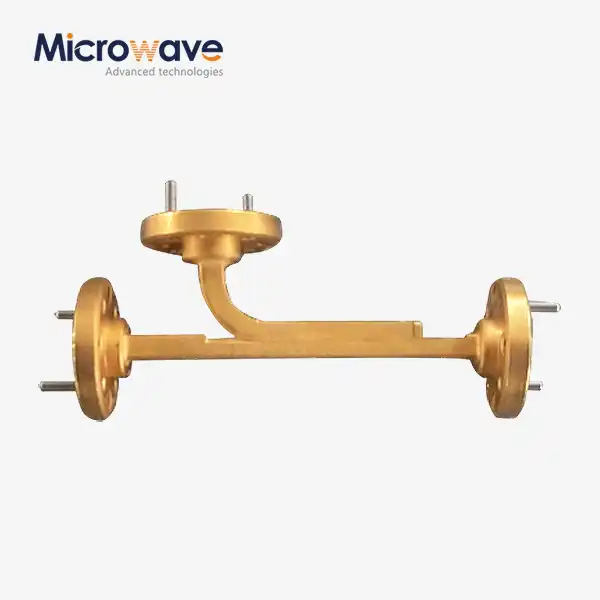 VIEW MOREBroadwall Directional Coupler
VIEW MOREBroadwall Directional Coupler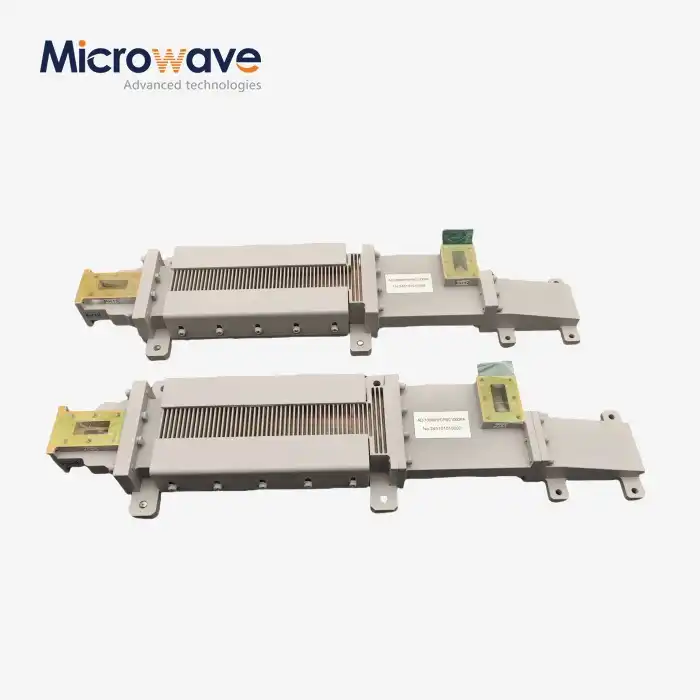 VIEW MOREWG Circulator
VIEW MOREWG Circulator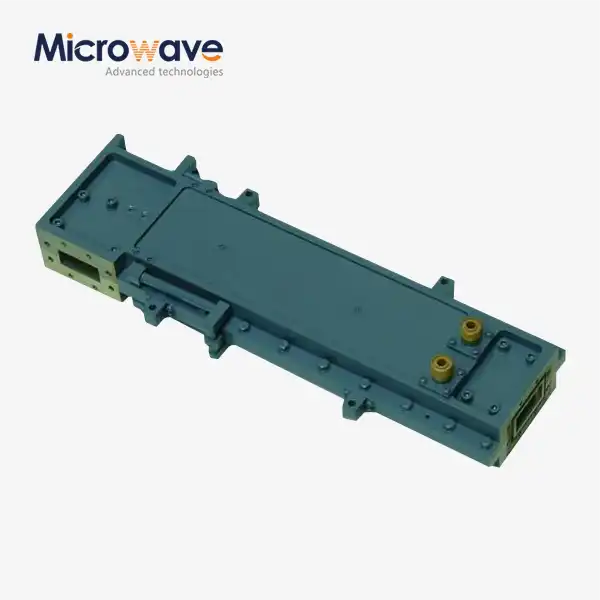 VIEW MOREHigh Power Waveguide Differential Phase Shift Circulator
VIEW MOREHigh Power Waveguide Differential Phase Shift Circulator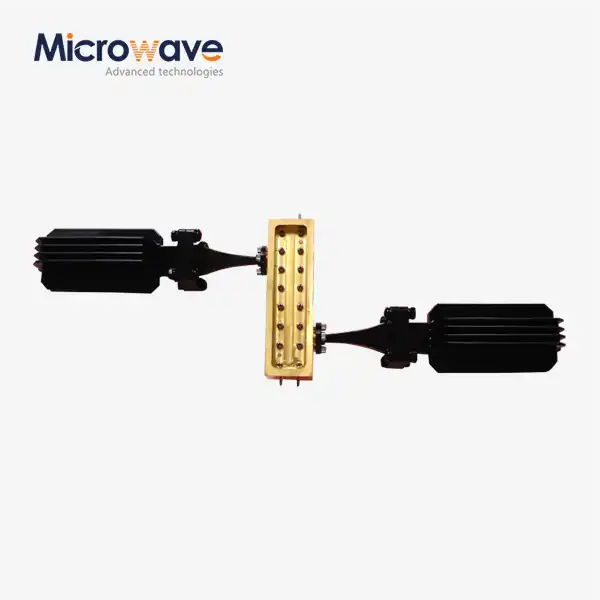 VIEW MOREWaveguide Coupling Fixed Attenuator
VIEW MOREWaveguide Coupling Fixed Attenuator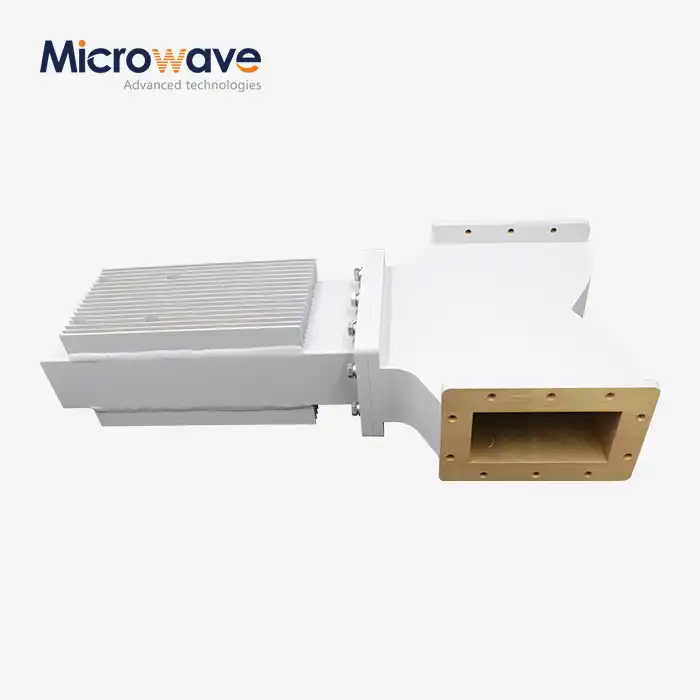 VIEW MOREWG Isolator
VIEW MOREWG Isolator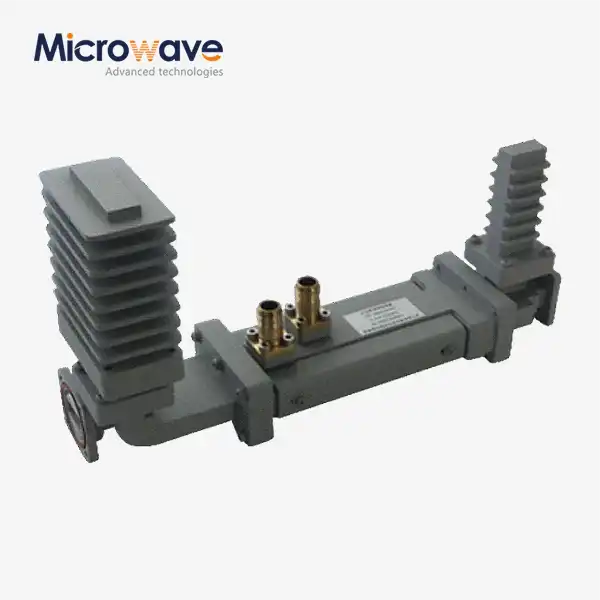 VIEW MOREHigh Power Waveguide Differential Phase Shift Isolator
VIEW MOREHigh Power Waveguide Differential Phase Shift Isolator VIEW MOREWG Band Stop Filter
VIEW MOREWG Band Stop Filter VIEW MOREWG Low Pass Filter
VIEW MOREWG Low Pass Filter




